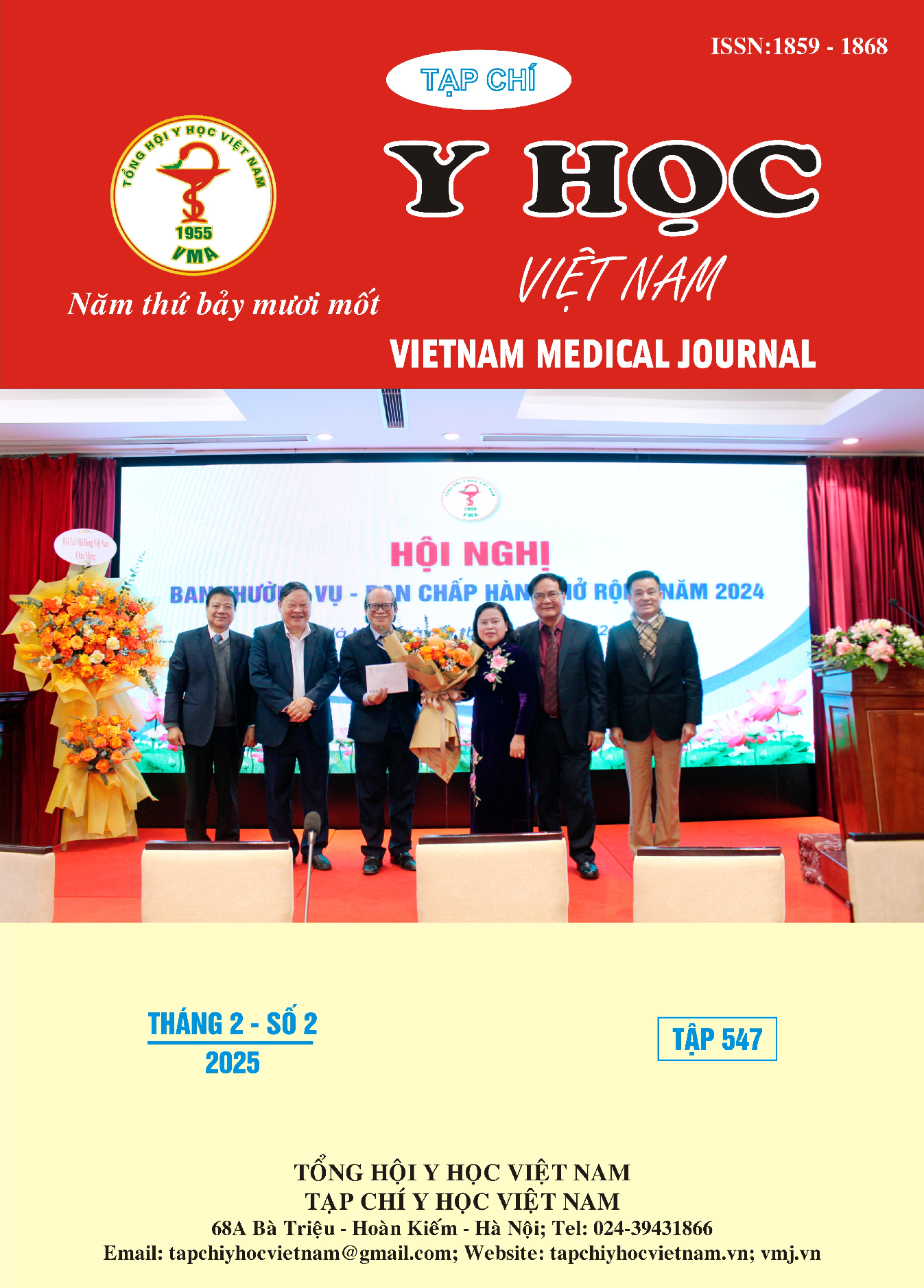QUALITY OF LIFE OF REGULAR HEMODIALYSIS PATIENTS AFTER THE HEALTH EDUCATION IN E HOSPITAL IN 2020
Main Article Content
Abstract
Objective: To assess changes in the quality of life of regular hemodialysis patients in E Hospital in 2020 after health education. Method: An educational intervention was implemented in 90 patients with regular hemodialysis at the Department of Nephrology, E Hospital from December 2019 to April 2020. Direct consultations for small groups of 7-10 patients were applied, the counseling contents based on the guidelines of the US CDC, guidelines of the World Health Organization, guidelines of the National Institute of Nutrition were applied for educatiing patients. The KDQOL-SFTM version 1.3 in Vietnamese language was used to measure with Cronbach alpha coefficient of 0,90. Results: Within a band score from 0 - 100 points, scores in the evaluation domains all increased compared to results before the intervention; specifically, the SF36 average quality of life score which was 40,13 ± 18,75; 1 month after intervention, it was increased to 43,75 ± 17,03, after 3 months, it increased to 50,80 ± 16,80. Before the intervention, kidney problems criterium scored 54,91 ± 21,69. It increased to 58,90 ± 8,60 after 1 month of intervention and 59,67 ± 10,03 after 3 months of intervention. The overall quality of life score of patients before intervention was 48,85 ± 14,01, increased to 51,82 ± 11,62 one month after intervention and increased to 58,70 ± 12,50 after 3 months of intervention (the differences were significant with p values of 0,001). Conclusion: The health education programs improved the quality of life of regular hemodialysis patients.
Article Details
Keywords
Hemodialysis, quality of life, patients
References
2. Lê Thị Huyền (2016). Đánh giá chất lượng cuộc sống bệnh nhân suy thận mạn đang được điều trị tại Bệnh viện Hữu Nghị Việt Nam - Cu Ba Đồng Hới năm 2016. Khoa học điều dưỡng, 1(2), tr. 58-65.
3. Nguyễn Hoàng Lan và Phù Văn Hưng (2016). Chi phí điều trị bệnh suy thận mạn giai đoạn cuối lọc máu chu kỳ tại Bệnh viện Quận Thủ Đức. Tạp chí Y Dược học - Trường Đại học Y Dược Huế, 6(4), tr. 34-40.
4. Lê Việt Thắng (2012). Khảo sát một số yếu tố liên quan đến chất lượng cuộc sống bệnh nhân suy thận mạn tính chạy thận nhân tạo chu kỳ. Tạp chí Y- Dược học Quân sự, 1, tr. 110-115.
5. Abraham Suja, Venu Anju, Ramachandran Anju và cộng sự (2012). Assessment of quality of life in patients on hemodialysis and the impact of counseling. Saudi Journal of Kidney Diseases and Transplantation, 23(5), tr. 953-957.
6. Alexopoulou M, Giannakopoulou N, Komna E và cộng sự (2016). The effect of perceived social support on hemodialysis patients’ quality of life. Mater Sociomed, 28(5), tr. 338-342.
7. Alikari V, Tsironi M, Matziou V và cộng sự (2019). The impact of education on knowledge, adherence and quality of life among patients on haemodialysis. Qual Life Res, 28(1), tr. 73-83.
8. Bakarman M. A, Felimban M. K, Atta M. M và cộng sự (2019). The effect of an educational program on quality of life in patients undergoing hemodialysis in western Saudi Arabia. Saudi Med J, 40(1), tr. 66-71.


